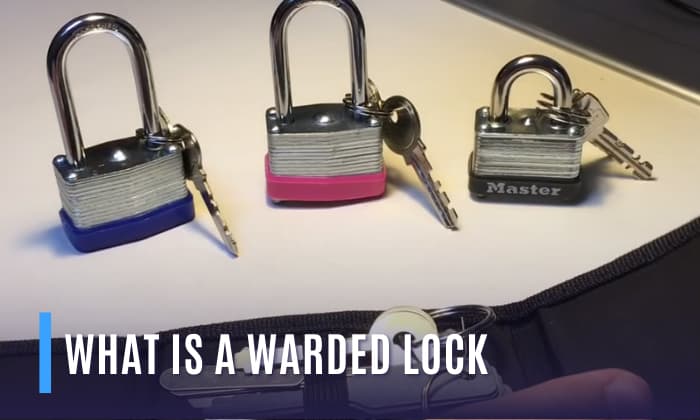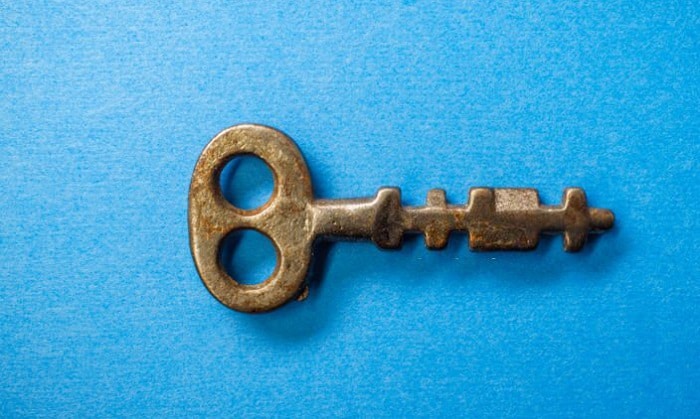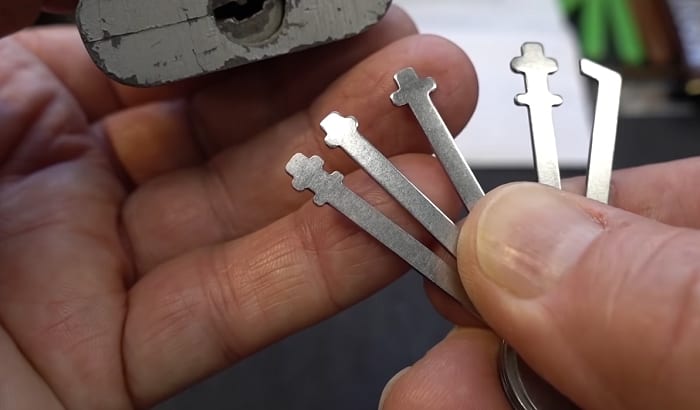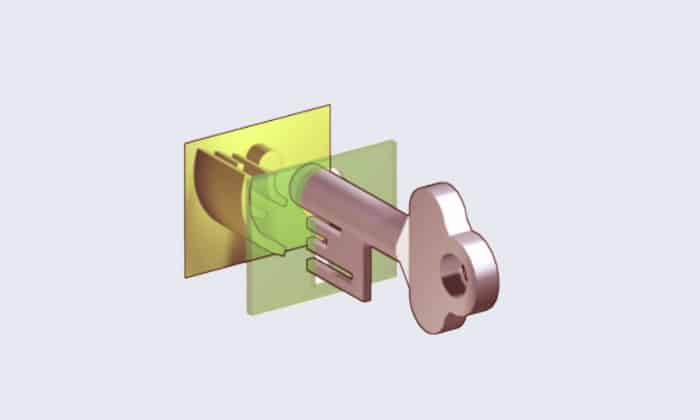What is a warded lock? You might have heard of this type of lock when ordering a lock set for your doors. It is actually a type of mechanical lock that utilizes notches or obstructions in preventing other keys that do not coincide with the notches from opening the lock.
Warded locks are well-known for their simplicity and security. And, because they are mechanical locks, they are not a new design. Continue reading to learn more amazing facts about this type of lock!
Table of Contents
Warded Lock: What is It? What is It for?
Warded locks can be dated back to ancient Rome and the middle ages, as some evidence found medieval locks to be warded.
Due to the old simple locking mechanism, locksmiths and craftsmen in the Middle Ages produced more intricate warded locks to make it more secure.
Now, warded locks are used in different applications that need low security, such as heritage sites to preserve its originality. Warded locks are also very common in bathroom doors, tool shed doors, and even utility room doors.
How Does a Warded Lock Work?
This mechanical lock has various blockages within its interior mechanism that form slots that only the correct key can fit into. Obstructions are typically outwardly projecting plates.
It works by making the key fill the lock’s warding, meaning that if the notches on the key do not fit the notches within the lock, the lock will remain locked.
Indeed, a warded lock can contain only one or a series of intricate wards meant to boost security.
Weak Points of a Warded Lock
There are two common weaknesses of warded locks that are exploited throughout the years. These are skeleton keys and impressioning.
- Skeleton keys are made by designing a master key which can open multiple warded locks, especially when the locks have similar notches. Some thieves pick warded locks by carrying multiple skeleton keys which they try to open warded locks.
- Impressioning, on the other hand, is defined as making a new key for the lock. A key blank, which is usually made out of wax or paint, is inserted through the warded lock to duplicate the notches of the original key.
Frequently Asked Questions
How do I know if my lock is warded?
Just knowing the definition of warded locks does not guarantee the identification of a lock if is warded or not. To identify a warded lock, you have to locate and look at the keyway of the lock.
If you illuminate the keyhole of a warded lock, you should see a clear keyway with a zigzag design.
The projections inside the warded lock should not be visible, as shown by the warded lock diagram.
Are warded locks secure?
Due to the rising popularity of lockpicking and the public access to skeleton keys, warded locks are not considered as a secure lock compared to other types of locks, such as a lever lock.
However, if you want a cheaper lock for a low-security application, you might want to grab a warded lock.
What is the difference between a tumbler and warded lock?
Knowing the difference between a warded lock vs tumbler lock is essential, especially when you plan to do lockpicking. It would also help you make the decision of choosing the type of lock that you want to have.
Here are the differences between a tumbler and warded lock:
- Keyway
When the keyway is illuminated by a flashlight, warded padlocks should have a clear keyway, as the fixed projections inside this lock cannot be seen directly.
On the other hand, tumbler locks have evident pins surrounding the keyway.
- Key
A warded key for a warded lock is mainly designed to fit the notch inside the lock itself. For example, if the warded lock has a triangle-shaped notch, the key should have the same warding, or less the key will not turn.
For keys for tumbler locks, they feature curves and points that raise the pins inside the lock to a certain height to unlock it.
Note: a warded lock key sometimes contains notches on both sides.
- Security
Comparing a warded lock and the tumbler lock, the more secure lock is the latter. This is because it is much easier to pick a warded lock than a tumbler lock.
Warded lock picking can be done with simple warded lock picks. They can also be easily opened by a warded lock skeleton key which can be bought from hardware stores.
- Purpose
Due to its security, warded locks are used in low-security applications such as basement or attic doors, utility rooms, and bedroom doors.
On the other hand, tumbler locks are used in applications needing high security such as important documents, safes, and cabinets for jewelry.
- Price
Warded locks are much cheaper compared to tumbler locks. Since it is much easier to open a warded lock without a key than a tumbler lock, the price for a warded lock is more affordable.
https://youtu.be/z9UIDzwBSeI
Conclusion
Although old and ancient, the warded locks still have a place in different applications in industries and companies. As locks develop into a more digital version of themselves, security is still the main reason why they exist.
Knowing the answer to the question “what is a warded lock?” will help you choose the appropriate lock for you. As long as you have a secure home for your family, you can live your life with no worries.

I am the last member to join Revolar and might be just the luckiest to work with dedicated people like Teddy and John. Our team has established a process where my only job is writing the best content to deliver incredible ideas and guides.






